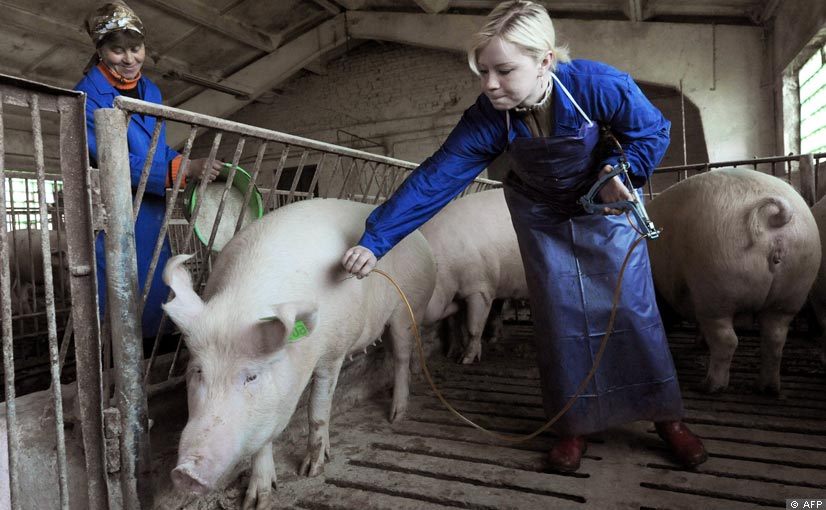Your Health columnist Kim Painter wants to know in USA Today tomorrow if the spike in handwashing compliance after SARS hit Toronto in 2003 will be replicated with swine flu in 2009 – and will it last?
.jpg) In summer 2003, researchers descended on airport bathrooms in the USA and Canada and discovered a dirty truth: More than 20% of restroom visitors left without washing their hands.
In summer 2003, researchers descended on airport bathrooms in the USA and Canada and discovered a dirty truth: More than 20% of restroom visitors left without washing their hands.
But there was one big exception: In Toronto, which had just endured a deadly outbreak of severe acute respiratory syndrome (SARS), fewer than 5% of people left dirty-handed. During that outbreak, public health officials had repeatedly urged people to protect themselves by washing their hands.
Doug Powell, a food scientist at Kansas State University, said if changing handwashing behavior was simple, "we wouldn’t have so many people getting sick each year."
.jpg) The story summarizes handwashing compliance advice for businesses, schools and hospitals as:
The story summarizes handwashing compliance advice for businesses, schools and hospitals as:
•The voice of authority. Just as federal health officials enlisted Obama to endorse handwashing, Dan Dunlop, president of Jennings, a North Carolina marketing company that has designed handwashing promotions for hospitals, has enlisted hospital CEOs and medical chiefs to inspire handwashing in their troops. School principals, PTA presidents and restaurant managers could do likewise, he says.
•The audience. "With younger people, what seems to work is being blunt and gross," Powell says. Powell, who writes at barfblog.foodsafety.ksu.edu, tells his students that when they eat without washing their hands first, they may be eating feces. (But he uses another word.)
•Social pressure. In one unpublished study, Craig found that petting-zoo visitors who left a barn through a crowded exit washed their hands more often than those who left by a less-crowded door.
•Keeping supplies up. Powell says he hears often about bathrooms in schools, college dormitories and other germ hotspots that lack soap (or paper towel – dp)..jpg)

 I didn’t find any statements on the
I didn’t find any statements on the  Maybe it was the swine flu, maybe it was the bad Flashdance welder-by-day-peeler-by-night references, maybe it was the BBQ sauce, but an advertisement for White Castle’s new pulled pork sliders has disappeared, only to reappear through the magic of
Maybe it was the swine flu, maybe it was the bad Flashdance welder-by-day-peeler-by-night references, maybe it was the BBQ sauce, but an advertisement for White Castle’s new pulled pork sliders has disappeared, only to reappear through the magic of  “Today’s discovery will not impact our borders or trading with Canada. As prescribed by the World Organization for Animal Health guidelines, any trade restrictions must be based on science so at this time, we are awaiting confirmatory test results before considering any action."
“Today’s discovery will not impact our borders or trading with Canada. As prescribed by the World Organization for Animal Health guidelines, any trade restrictions must be based on science so at this time, we are awaiting confirmatory test results before considering any action."
 The affected hogs were quarantined and all are recovering or have already recovered. Only one other person who has had contact with the pigs shares signs of illness.
The affected hogs were quarantined and all are recovering or have already recovered. Only one other person who has had contact with the pigs shares signs of illness. Dr. Mark
Dr. Mark .jpg) As we’ve said, proper handwashing with the proper tools — soap, water and paper towel — can significantly reduce the number of foodborne and other illnesses, even the emerging swine flu.
As we’ve said, proper handwashing with the proper tools — soap, water and paper towel — can significantly reduce the number of foodborne and other illnesses, even the emerging swine flu.
 When faced with outbreaks of foodborne illness on fresh produce, sales of veggie washes go up.
When faced with outbreaks of foodborne illness on fresh produce, sales of veggie washes go up.